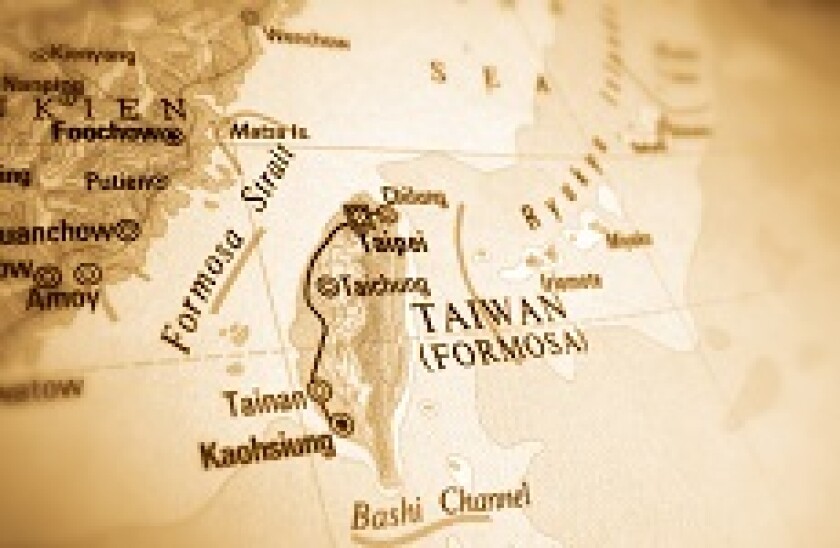It had looked so promising. As early as December 2012, Taiwan was granted its own offshore RMB clearing bank, Bank of China Taipei, thus becoming the first location to gain one after Hong Kong. Deposits began to accumulate and there was the inkling of a local RMB bond market.
But soon the progress had slowed to a crawl. Formosa bonds, although they picked up a little steam in 2014, are nowhere near as prevalent as they could be. Regulatory obstacles have continued to dog issuers and investors alike, while the political to-and-fro over a Cross-Strait Service Trade Agreement with China has also stymied development.
The bright spot — and one reason to be optimistic, provided other issues can be resolved — is deposits. Outside Hong Kong, Taiwan is officially the leader in offshore RMB deposits among all the hubs, with some Rmb300bn ($48bn) as of the end of November 2014, almost double the level of 12 months before and ahead of Singapore's last reported number, which was about Rmb257bn in September 2014.
However, the pace of Taiwan deposit growth slowed last year (as it did everywhere), as deposits there had already reached Rmb214bn in January 2014 and almost showed no increase in the last few months of the year. In October, they went up by just Rmb100m.
In fact, while it is celebrating its three year anniversary of being a hub, Taiwan seems to have lost a lot of RMB ground to Singapore, which became an RMB hub in February 2013. Even the newer European hubs are showing more momentum.
Singapore deposit growth has also slowed, but data from Swift shows that the city-state is still leading the momentum among offshore RMB hubs in international RMB payments, showing 574% growth from September 2013 to September 2014, followed by Luxembourg (517%) and the UK (236%). On that basis, Taiwan is ranked eighth, not a great position for a market seen by many as a natural offshore hub because of its close trade relationship with China.
On the capital markets side, the Formosa bond market (RMB-denominated bonds listed on Taiwan’s GreTai Securities Market) saw total issuance of just Rmb20.8bn from 15 issuers and 31 tranches last year.
Such bonds are almost the only RMB investment tool available for local investors, but although December's news of a raising of the ceiling for the size of the market is to be welcomed, as is the talk of allowing retail participation, international institutional buyers will still show little interest while the sector lacks a crucial element of a developed market: secondary liquidity. And with Chinese corporates still banned from issuing in the country, an important potential source of supply is missing.
And then there are the regulatory hurdles. In October last year, Hang Seng Indexes and Markit launched an offshore RMB bond index family (HSM iBoxx) tracking the performance of offshore RMB sovereign and corporate debt issued outside mainland China. But it left out those issued and settled in Taiwan due to uncertainties around tax that made international investors hesitated to participate.
Efforts have been made by local authorities to promote the RMB market and give incentives to market participants. There has been some easing of the investment restrictions for insurers, for instance. But these are all very subtle improvements for a market that has massive potential.
The market would benefit a lot if regulators could give the final approval for the long awaited Rmb100bn of RQFII quota, which would be the biggest among all existing RMB hubs. The final nod is still pending the outcome of the Cross-Strait Service Trade Agreement, and that still needs to be ratified by Taiwan’s parliament.
With its deposit base and a domestic insurance sector that is prepared to gobble up whatever bonds are issued, Taiwan already has solid foundations for the building of an RMB palace. But to realise that dream, it needs to take more concrete steps to encourage it.

